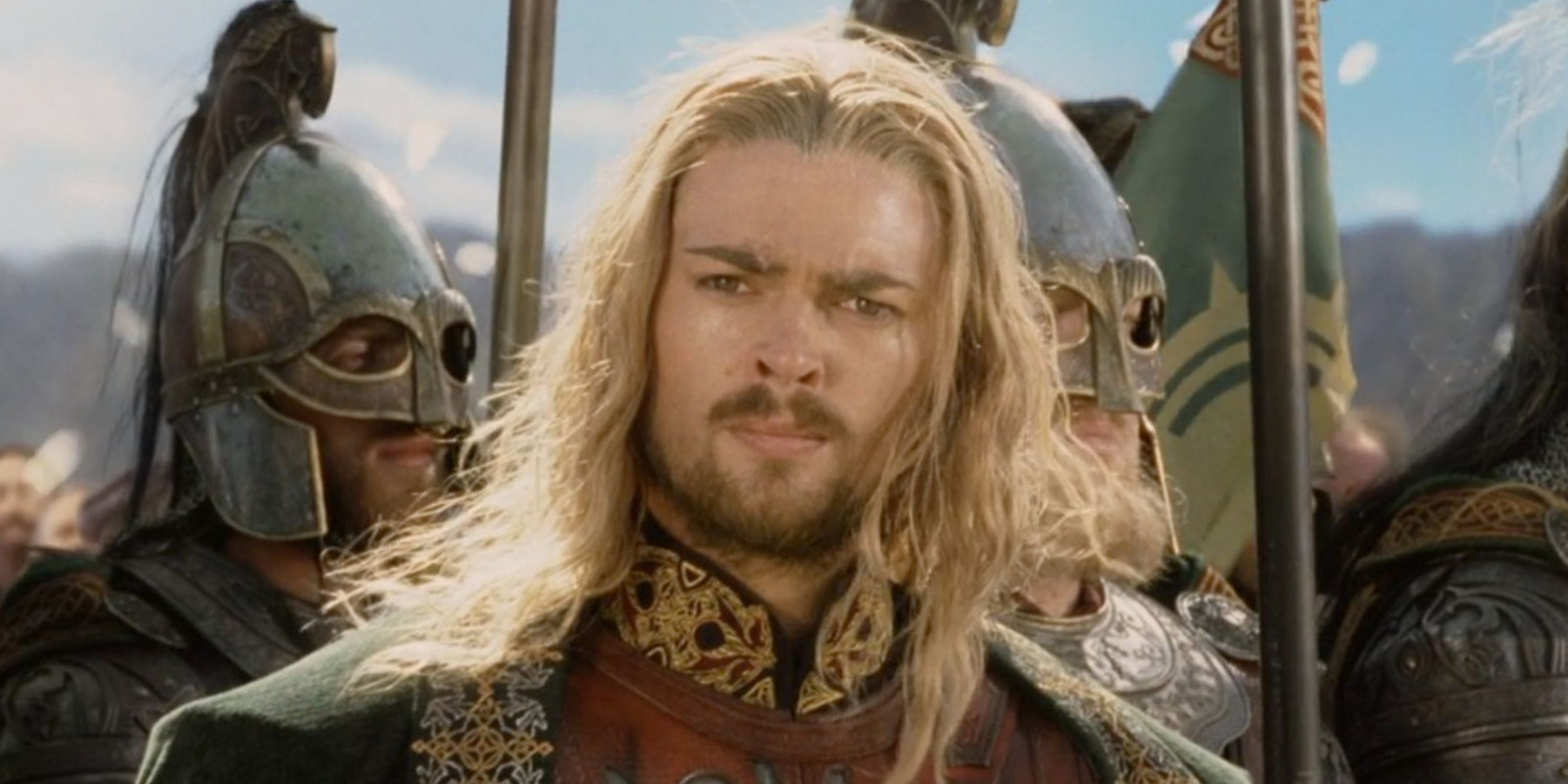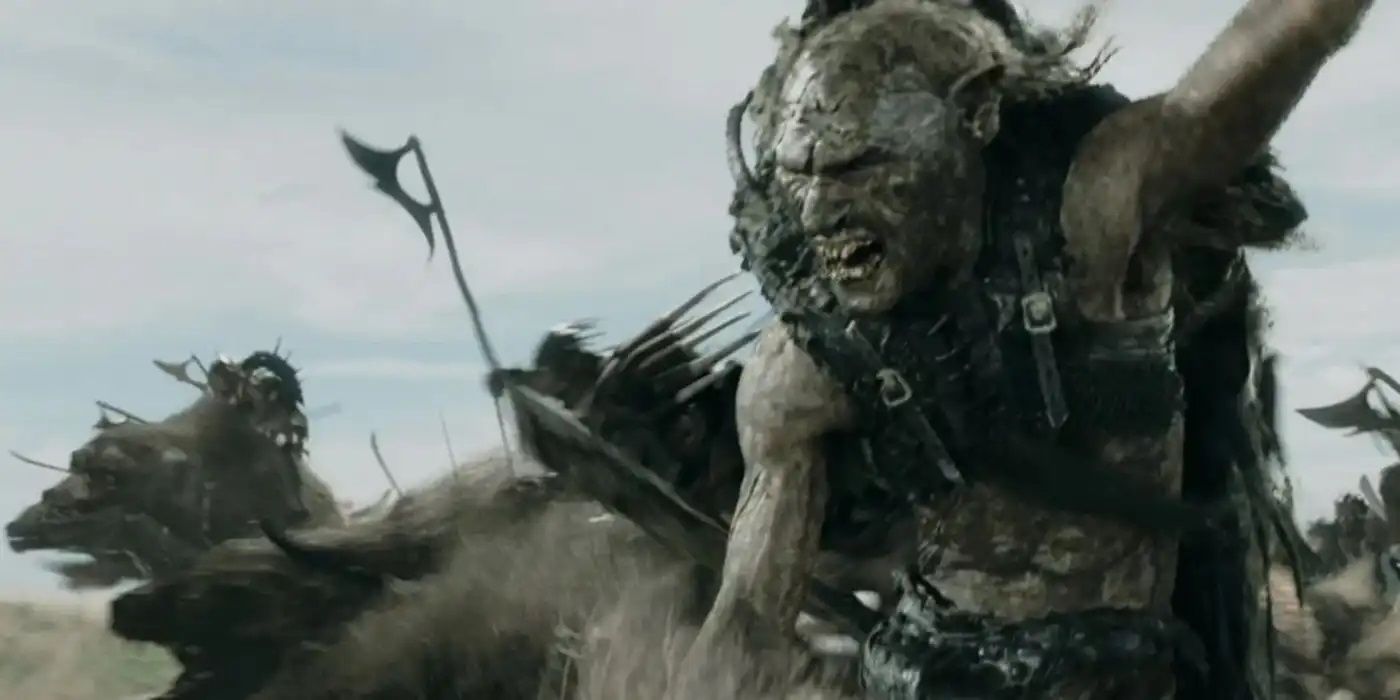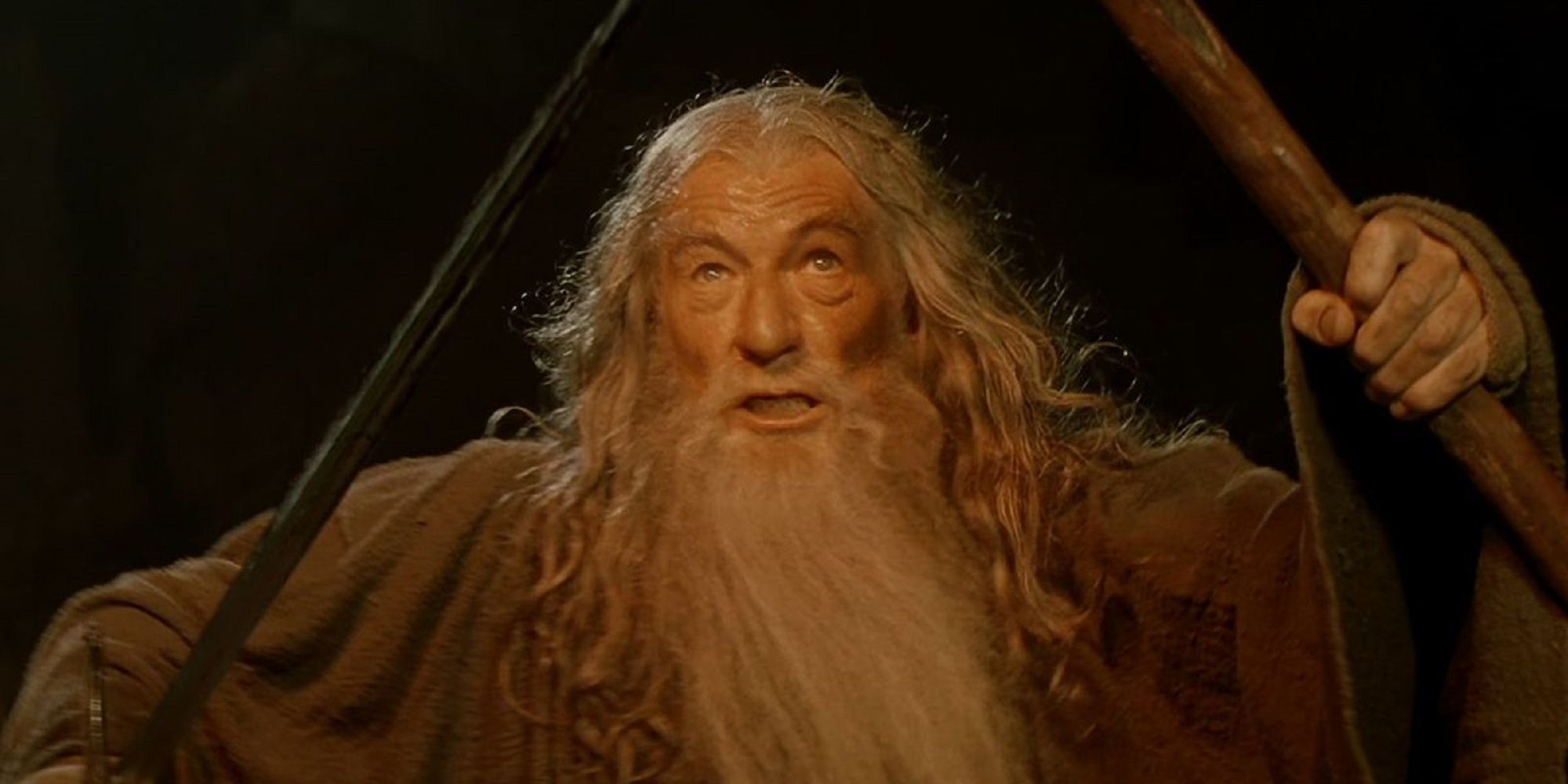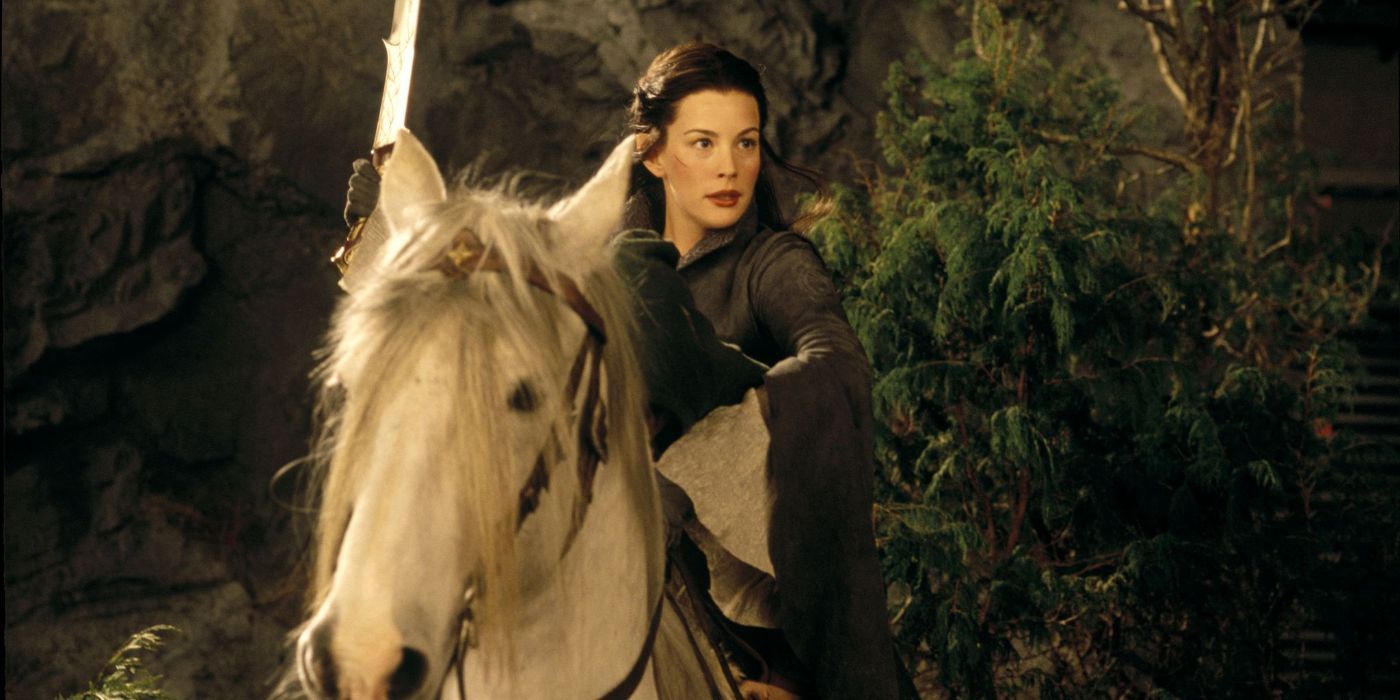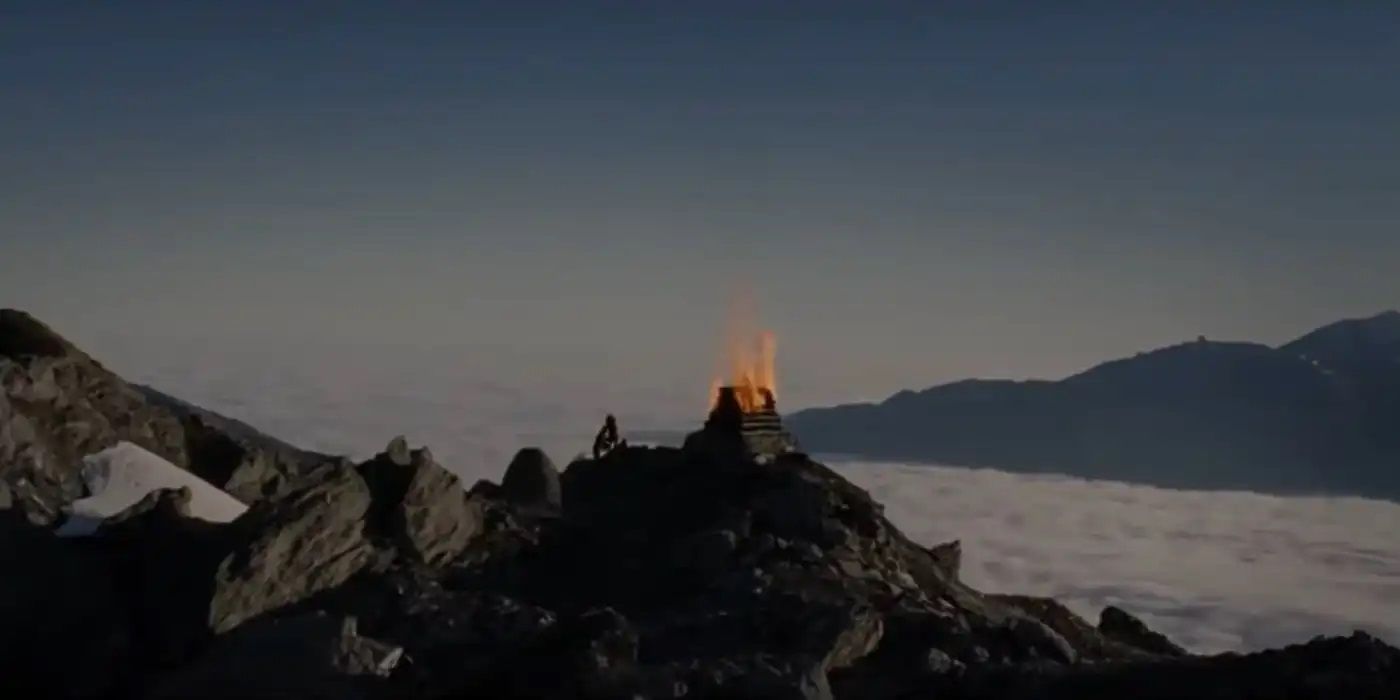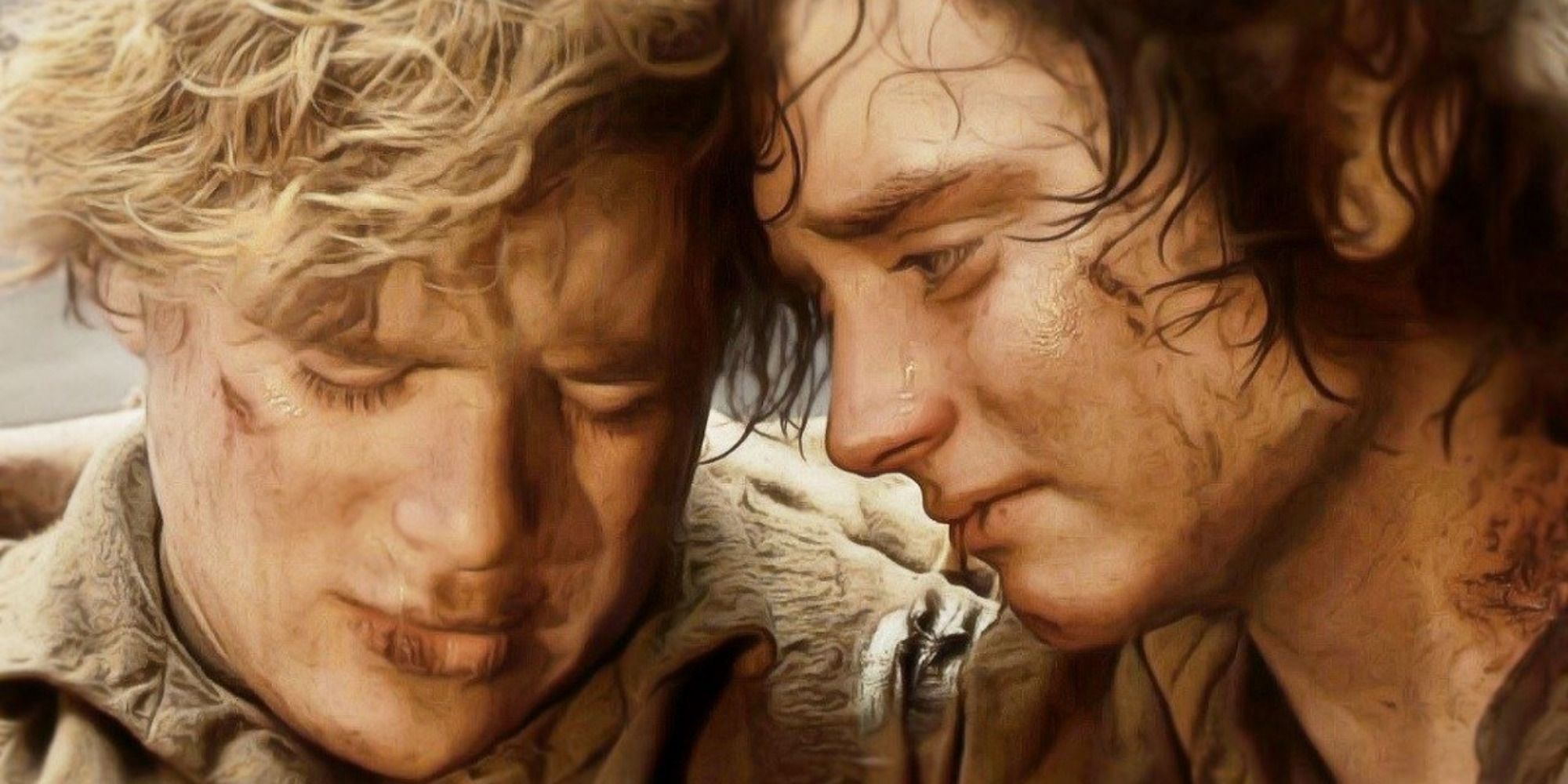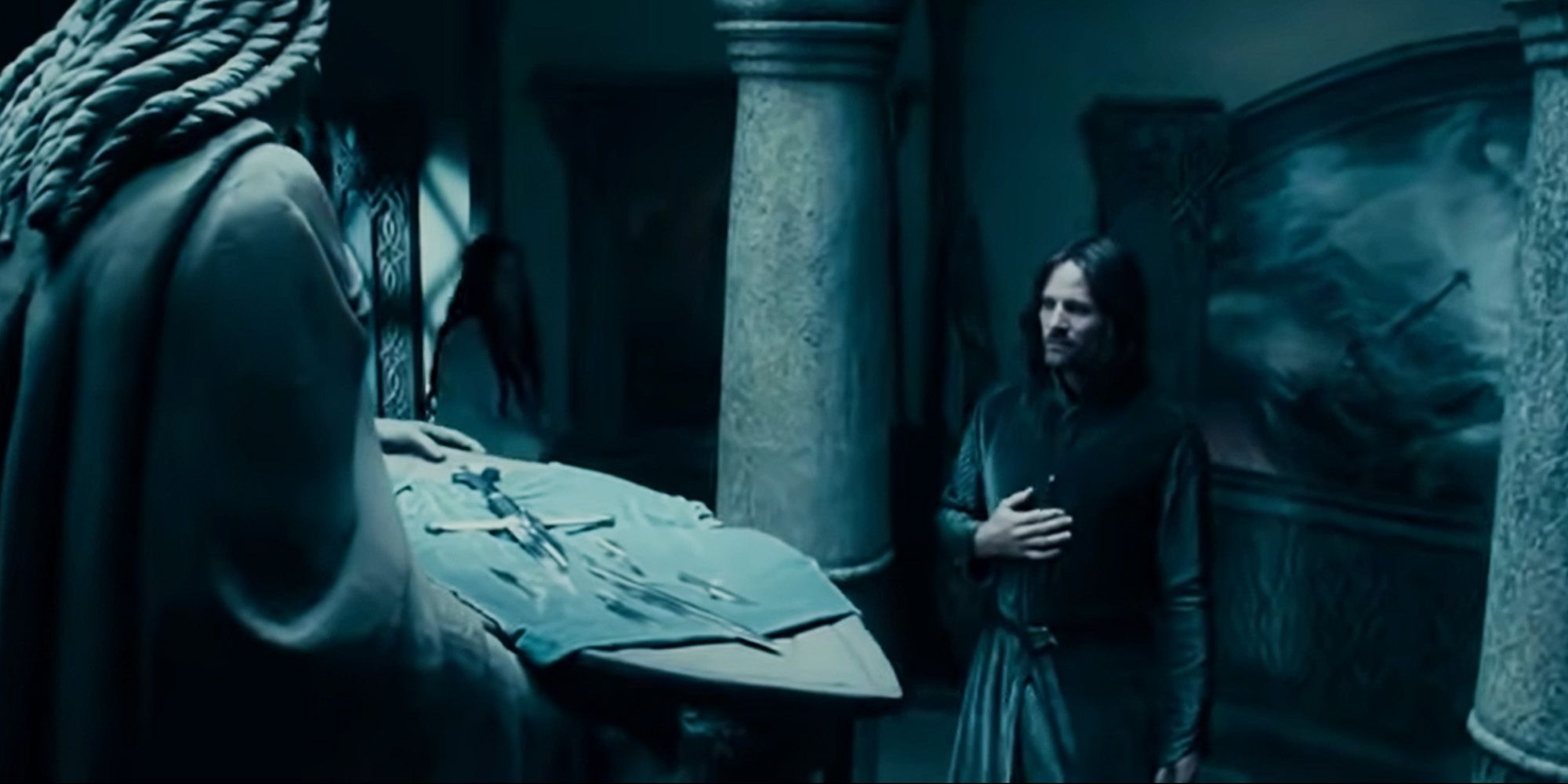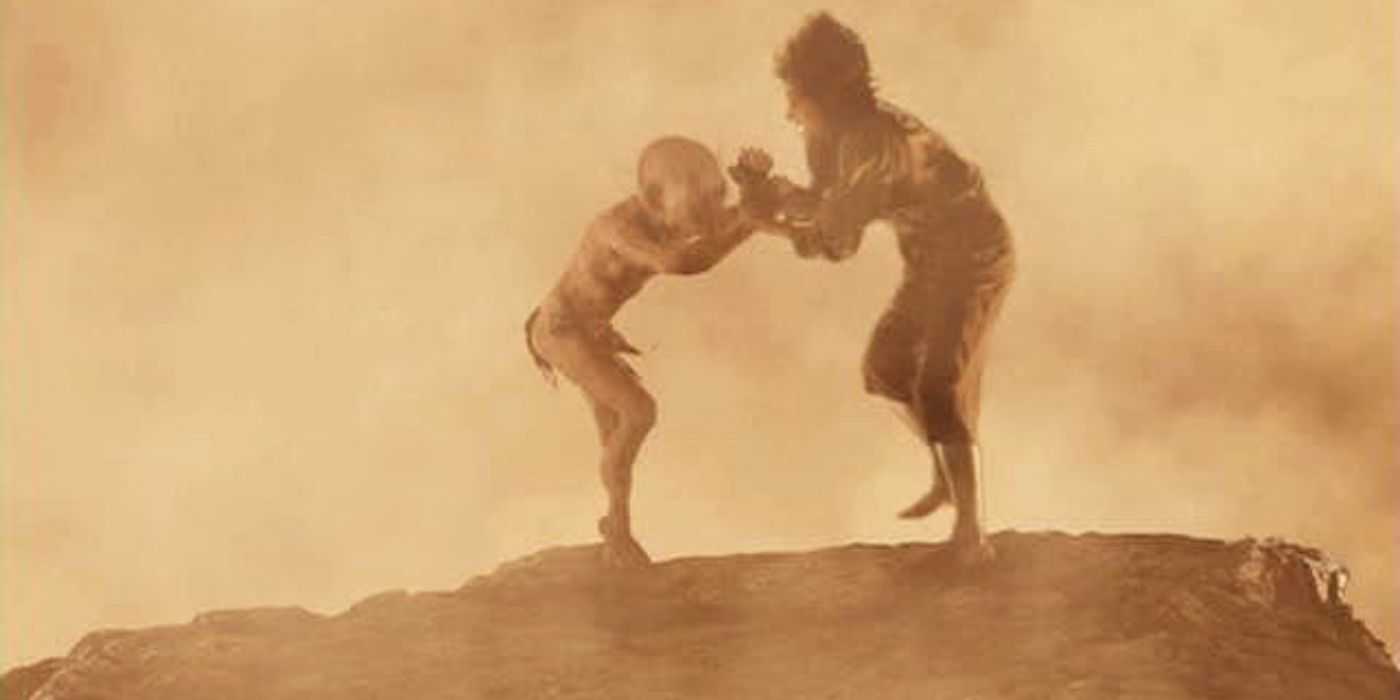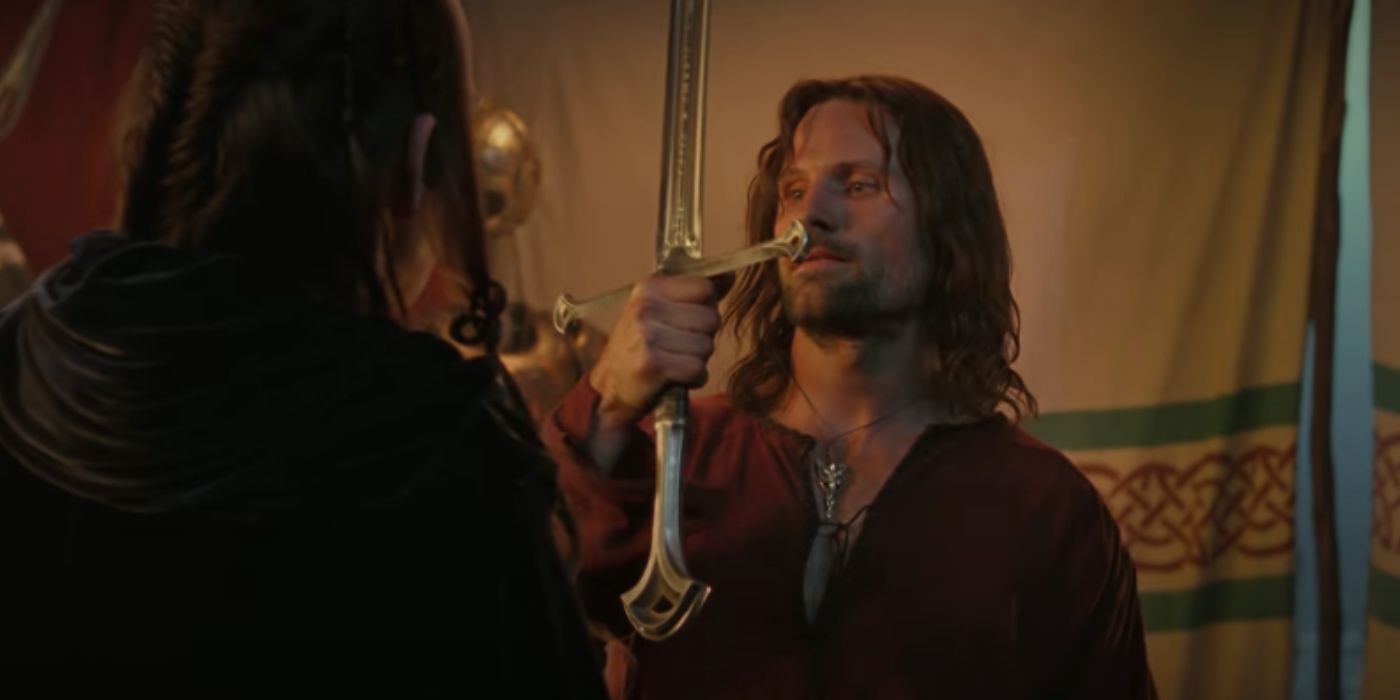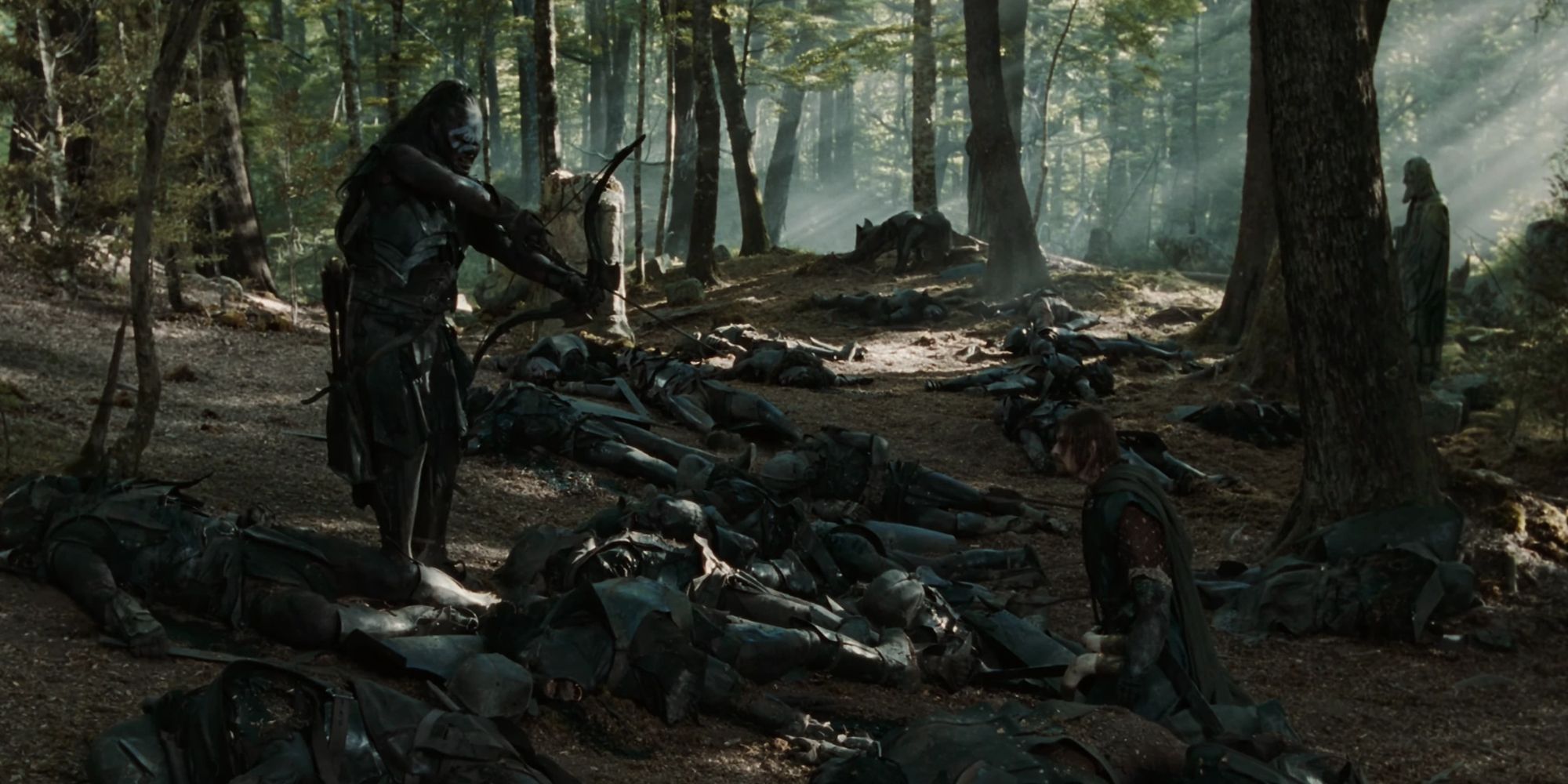Since it was first published in 1954, The Lord of the Rings has reigned as the undisputed king of fantasy novels and has served as the foundation for the modern fantasy genre. Written by Professor J. R. R. Tolkien, it chronicles the Third Age of Middle Earth, where a band of heroes must venture forth to save the land from the Dark Lord, Sauron (Alan Howard), by destroying his Ring, which contains a large quantity of his soul and power. From 2001 to 2003, director Peter Jackson adapted the story into three films, which continue to dominate popular culture thanks to their impressive effects, stellar acting, and powerful cinematography.
All that said, Jackson and his crew had to make many changes to the original books to make the story work for the realm of film. Tolkien’s fans and scholars are divided on many of these changes, but a few of them aren’t too damaging to the story.
10 Replacing Erkenbrand with Eomer
Replace an Inconsequential Characters With One Who Matters
With the death of Theoden’s son (Bernard Hill), Theodred, his nephew, Eromer (Karl Urban), is to be the next king of Rohan. The film sadly reduces his role from the book and cuts out many moments of comradery between him, Aragorn (Viggo Mortensen), and Gimli (John Rhys-Davies). However, they do give him a rather powerful moment when he arrives with reinforcements at the Battle of Helm’s Deep, replacing the book-only character of Erkenbrand.
The main reason for Eomer to be the one to arrive is because he was exiled by Theoden’s traitorous advisor, Grima Wormtongue (Brad Dourif). Despite this, he continues to fight for his uncle and country by rallying riders to fight against the marauding orcs that cross their border. While it would have been nice to see his interactions with the main characters, his arrival at the end of the battle, and his decision to remain loyal to his uncle, do a good job of highlighting why he is worthy of the throne.
9 The Warg Attack
An Additional Action Scene With Drama and Comedy
To protect the people of Rohan from the armies of the fallen wizard Saruman (Sir Christopher Lee), King Theoden commands them to head to the fortress of Helms Deep. Unfortunately, Saruman is informed of this by Grima Wormtongue. He decides to unleash a hunting party of orcs riding giant wolves called wargs, which ambush Theoden’s people on the road.
This attack doesn’t happen in the book, but it’s honestly one of the film’s more memorable action scenes. It’s a brutal cavalry battle against enemies where both the mount and the rider are equally deadly, and it ends with Aragorn falling off a cliff and getting temporarily separated from the group. There are also a few moments of levity in the battle with Gimli, who gets buried beneath corpses while trying to be a badass.
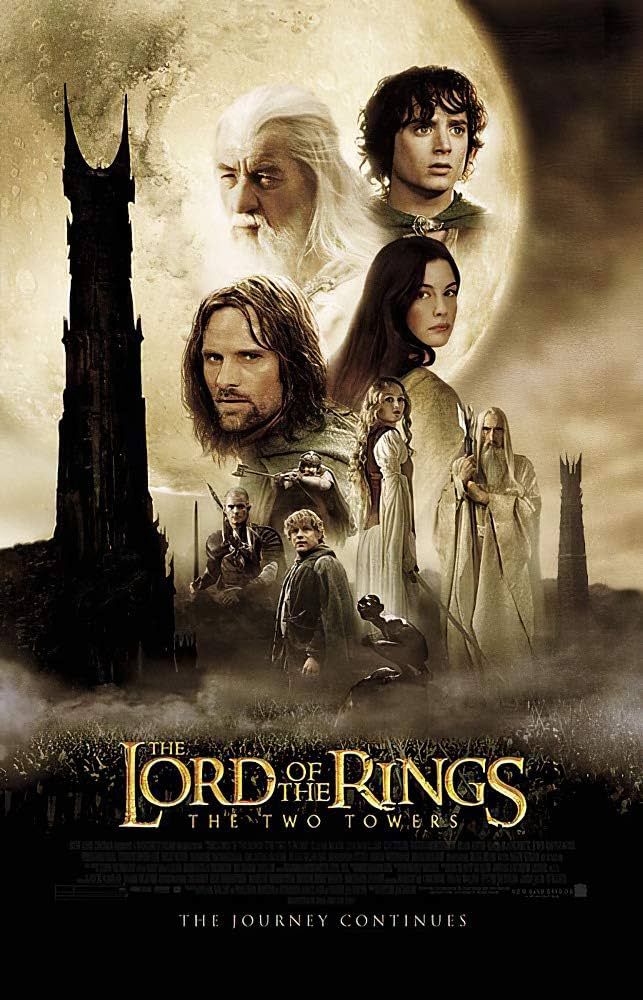
The Lord of the Rings: The Two Towers
- Release Date
- December 18, 2002
- Runtime
- 179 minutes
8 Gandalf Doesn’t Want to Go to Moria
Swapping Character Motivations For Drama
When the Fellowship departs from Rivendell, there is some debate among the group as to which path to take to get to Mordor. They initially try to cross the mountain Caradhras, only to be defeated by Saruman’s magic. The group’s wizard, Gandalf the Grey (Sir Ian McKellen), then suggests that they travel through the old dwarven kingdom of Moria.
In the film, it is Gimli who insists that they travel through Moria, with Gandalf refusing until there is no other choice. This change was likely done to emphasize the danger of Moria and built up to the reveal of the Balrog. Speaking of the Balrog, its reveal was a surprise for everyone in the book, but in the movie, both Gandalf and Saruman are aware of its existence, which feeds into Gandalf’s fears.
7 Arwen’s Expanded Roll
More Screen Time For the Sake of a Love Story
The daughter of Lord Elrond (Hugo Weaving) of Rivendell, Arwen (Liv Tyler) is in love with Aragorn, to the point where she is willing to give up her immortal life as an elf for a mortal one with him. Because Arwen is in Rivendell, she doesn’t do much in the books outside of making Aragorn’s royal standard. For the film, Jackson and Co decided to give Arwen an expanded role so that they could add a romantic subplot to the film.
For the most part, Arwen’s story is harmless and focuses on her debate between remaining on Middle Earth for Aragorn or leaving with the elves to never know the pain of loss. Ultimately, she chooses to stay, as while a mortal life will have loss, it can also have life and joy. She is also introduced earlier than her book counterpart when she comes to help an injured Frodo Baggins (Elija Wood) get to her father before he succumbs to his wounds.
6 Lighting the Beacons
One of the Most Epic Moments in Cinema
As the armies of Mordor prepare to attack the capital city of Gondor, Minas Tirith, Gandalf and the hobbit Peregrine Took (Billy Boyd) arrive in the city to lend aid. Unfortunately, they find that the steward, Denethor (John Noble), has given into despair and madness following the loss of his eldest son, Boromir (Sean Bean). To ensure the city survives, Gandalf sends Pipin to light the beacons to call for aid from Rohan, but this is a film-only situation.
In the book, the Beacons call Gondor’s army, and Rohan is summoned by a rider bearing a red arrow. Denethor is also a bit more capable in the book and has already lit the beacons before Gandalf and Pipin arrive. This change ends up working because it helps to sell the idea of hope being rekindled among the kingdoms of men, and is told through some truly gorgeous footage of the mountains accompanied by Howard Shore’s score.
5 Sam and Frodo’s Conflict
Last Minute Drama That Builds Up Gollum
While traveling to Mordor, Frodo and his friend, Sam (Sean Astin) force the ring’s previous owner, Gollum (Andy Serkis), to lead them into Mordor through hidden pathways. Though Frodo wants to believe Gollum can be redeemed, Sam never trusts him and keeps a constant vigil to make sure he doesn’t try anything. Unfortunately, Gollum drives a wedge between the friends by disposing of their food and framing Sam, which prompts an exhausted Frodo to banish him from the group.
For the film, this scene works because it helps to show Gollum’s devious nature and adds another wrinkle to this final leg of the journey. It’s heartbreaking to see Frodo so consumed by the dark thoughts of the ring that he views Sam as an enemy. It also helps to show why Gollum is such a dangerous foe: though not physically threatening, his time as a slave to the ring means that he knows how to play on other’s obsessions to bring out their worst qualities.
4 The Shards of Narsil
Changing Their Location For Aragorn’s Story
During the final battle against Sauron in the Second Age, the king of Gondor, Isildur, defeated Sauron by cutting the One Ring from his hand using the shards of his father’s sword, Narsil. Following his death, Narsil’s shards were passed down through his bloodline, eventually landing in the possession of Aragorn. When Aragorn joins the Fellowship, the sword is reforged into Anduril, the Flame of the West.
Jackson decided to separate Aragorn from Narsil, with the shards being kept on display in Rivendell. The sword also isn’t reforged until The Return of the King, where it is symbolically presented to Aragorn to show the culmination of his journey from ranger to king. It also, admittedly, might look silly if, in the film, Aragorn tried fighting his enemies with a broken sword before the quest began.
3 Frodo and Gollum’s Final Fight for the Ring
Turning the Ring’s Greatest Defence Into Its Means of Destruction
After a climactic journey to bring the ring to Mount Doom, Frodo finally succumbs to its corrupting influence and refuses to destroy it. At that moment, Gollum ambushes him and bites off his finger, claiming the ring for himself before losing his footing and falling with it into the magma. However, Jackson decided to have Frodo try one last time for the ring and knock Gollum off the ledge as the two struggled.
This change is a small one, but it adds a lot to the overall narrative. The biggest addition is that it gives Frodo a more active role in the ring’s destruction, rather than it being because Gollum was clumsy. Plus, having the two fight for the Ring shows its greatest defense is ultimately the very thing that caused its destruction.
2 Aragorn’s Character Arc
A Reluctant Hero Works Better For Film
As the only living descendant of Isildur, Aragorn, son of Arathorn, is the rightful king of Gondor. He was kept hidden and raised among the Dunedai Rangers for most of his life, and he actively works towards reclaiming his throne by taking the fight to the forces of evil. In the films, however, Jackson and the writers gave Aragorn more flaws, such as doubting if he was worthy of his birthright.
While it can be debated if this change was better or worse than Tolkien’s version of Aragorn, it works better for a film trilogy. Giving Aragorn self-doubt gives him a flaw to overcome, and makes many of the scenes where he chooses to fight and die alongside his fellow men have more emotional weight. By the time he is finally crowned after Sauron’s defeat, it feels like he truly went through Hell and back to get to this moment.
1 Boromir’s Death
More Time To Show His Highs and Lows
Perhaps the most tragic member of the Fellowship is Boromir, the eldest son of Denethor, steward of Gondor. Worn down by his countrymen giving their lives as the bulwark against the forces of Mordor, he suggests using the ring against Sauron, and when rejected, he decides to join the Fellowship to see it destroyed. Unfortunately, he succumbs to the ring’s temptation and tries to take it from Frodo, then gives his life protecting the hobbits Merry and Pippin from Uruk Hai.
Thanks to the film not being married to one character’s point of view, audiences see Boromir during the final moments of his life, fighting valiantly until the end, even as his body is riddled with arrows. His final moment with Aragorn is heartbreaking, thanks in no small part to Bean’s phenomenal performance. He parts with Aragorn in friendship, finally calling him “my king” after rejecting the idea of a king of Gondor at the Council of Elrond.


